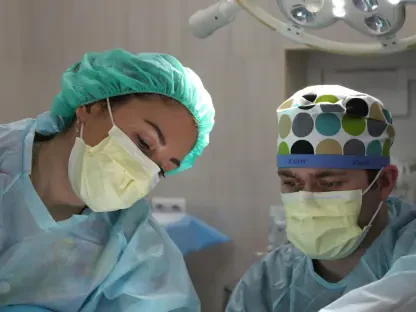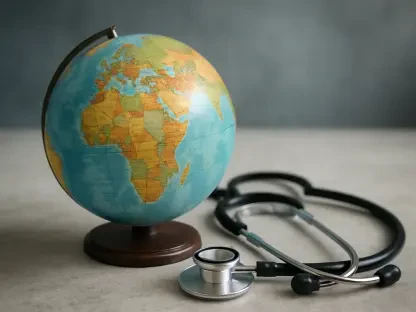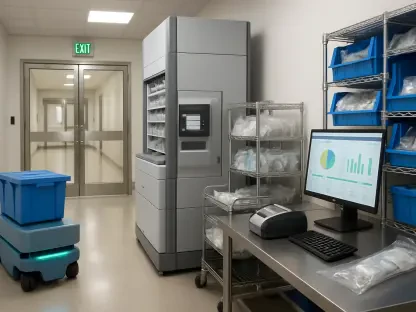I’m thrilled to sit down with James Maitland, a renowned expert in robotics and IoT applications in medicine, whose passion for integrating technology into healthcare has led to groundbreaking insights. With a deep understanding of how policy and innovation intersect, James is the perfect person to discuss the recent exemption of medical device steel imports from BIS certification in India. In this interview, we’ll explore the challenges faced by the medical device industry due to import restrictions, the critical role of specialized steel in manufacturing, the government’s response to industry concerns, and the broader implications for healthcare supply chains both in India and globally.
How did the BIS certification mandate on steel imports initially impact the medical device industry in India?
The BIS certification mandate created significant hurdles for the medical device industry, primarily because it restricted the import of specialized stainless steel strips crucial for manufacturing devices like surgical blades, needles, and endoscope parts. Domestic manufacturers found themselves grappling with supply chain disruptions since the local steel often didn’t meet the stringent quality standards required for globally compliant products. This led to delays in production and raised concerns about meeting delivery commitments in key markets like the US, Europe, and even within India.
What makes the special grade of stainless steel so essential for producing medical devices that meet international standards?
The special grade of stainless steel is vital because it ensures the precision and reliability needed in medical devices. For instance, surgical blades and needles require specific burr-free edges and dimensional accuracy to avoid inconsistencies during manufacturing processes like welding. Poor quality steel can result in defects, leakage, or even product failure, which is unacceptable in healthcare. Without access to this high-grade imported steel, manufacturers risk producing substandard devices that can’t compete in the global market or meet safety standards.
Can you walk us through the specific concerns raised by the industry regarding the potential disruption of supply chains?
Absolutely. The industry, through representatives like AiMeD, highlighted that the inability to import necessary steel could derail production timelines significantly. This wasn’t just a manufacturing issue; it threatened to disrupt healthcare delivery by delaying the supply of critical devices to hospitals and clinics. Markets in the US and Europe, which rely on timely exports from India, could have faced shortages, while domestically, India’s own healthcare system risked a crisis if essential tools weren’t available when needed.
How did the Steel Ministry address these pressing concerns from the medical device sector?
The Steel Ministry showed responsiveness by granting exemptions from the BIS certification mandate for a select period. For instance, manufacturers of surgical blades received a one-year reprieve, allowing them to import the necessary steel without the certification barrier. Overseas manufacturers sourcing hot-rolled steel from BIS-registered downstream producers were given a six-month extension. These temporary measures were a direct response to the industry’s plea for flexibility to maintain production and avoid broader disruptions.
What role did the Department of Pharmaceuticals play in smoothing out the import process for steel used in medical devices?
The Department of Pharmaceuticals played a crucial facilitating role by recommending the issuance of No Objection Certificates (NOCs) for small volumes of specific steel products, like capillary tubing and stainless steel wire. This process ensures that imports are strictly for manufacturing purposes and not for trading, with safeguards in place to monitor usage. Their involvement helped balance the need for quality materials with the enforcement of regulatory standards, providing a practical pathway for manufacturers.
Can you elaborate on the potential healthcare crisis that industry leaders mentioned could have occurred without these exemptions?
Certainly. A disrupted supply chain for medical devices could have had a cascading effect on healthcare delivery. In India, hospitals might have faced shortages of critical tools like surgical blades and needles, delaying surgeries and other procedures. Internationally, markets relying on Indian exports could have experienced similar issues, impacting patient care on a global scale. The crisis would have been both logistical, with stalled production, and clinical, with healthcare providers unable to access the tools they need to save lives.
What are some of the ongoing challenges with the Quality Control Order on steel imports, as highlighted by industry voices?
One major challenge is that many foreign suppliers are reluctant to export steel to India due to the additional burden of obtaining BIS certification. This creates a bottleneck for raw material imports. Additionally, there’s an imbalance where finished steel products can be imported freely, but raw materials face restrictions. This puts domestic manufacturers at a disadvantage, as they can’t access the same quality inputs as their competitors abroad, leading to inefficiencies and higher costs.
What is your forecast for the future of medical device manufacturing in India, given these policy adjustments and ongoing challenges?
I’m cautiously optimistic about the future of medical device manufacturing in India. The recent exemptions are a step in the right direction, showing that the government is willing to listen and adapt policies to support the industry. However, long-term success will depend on finding a sustainable balance between enforcing quality standards like the QCO and ensuring access to critical raw materials. If India can streamline certification processes and foster partnerships with global suppliers, it has the potential to become a leading hub for medical device production. But without continued dialogue between policymakers and industry stakeholders, supply chain vulnerabilities could persist.









